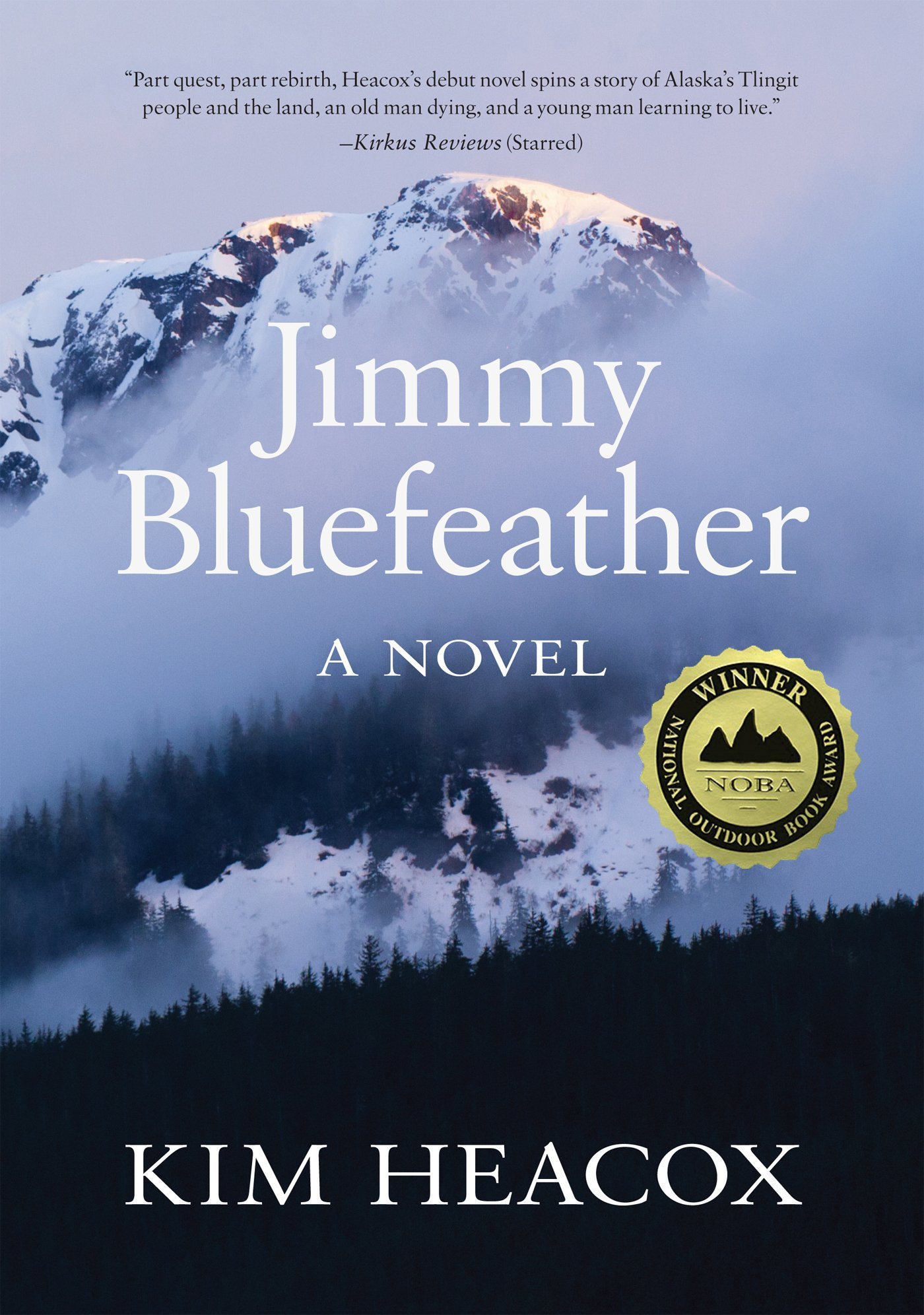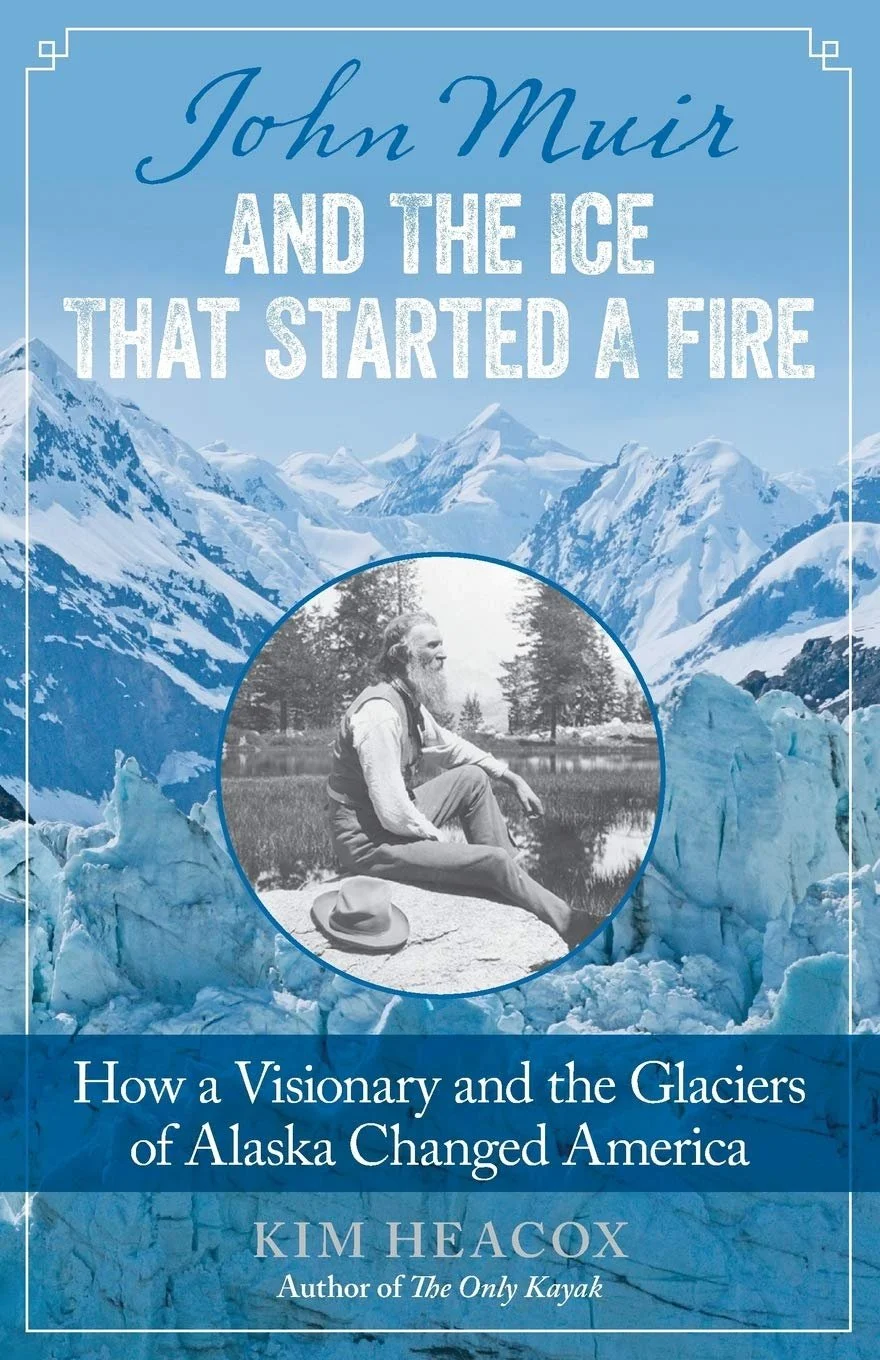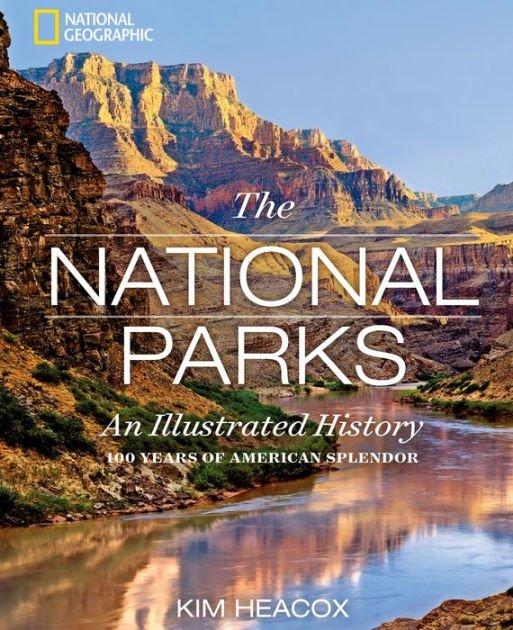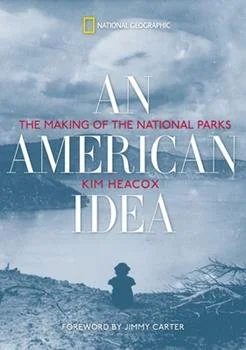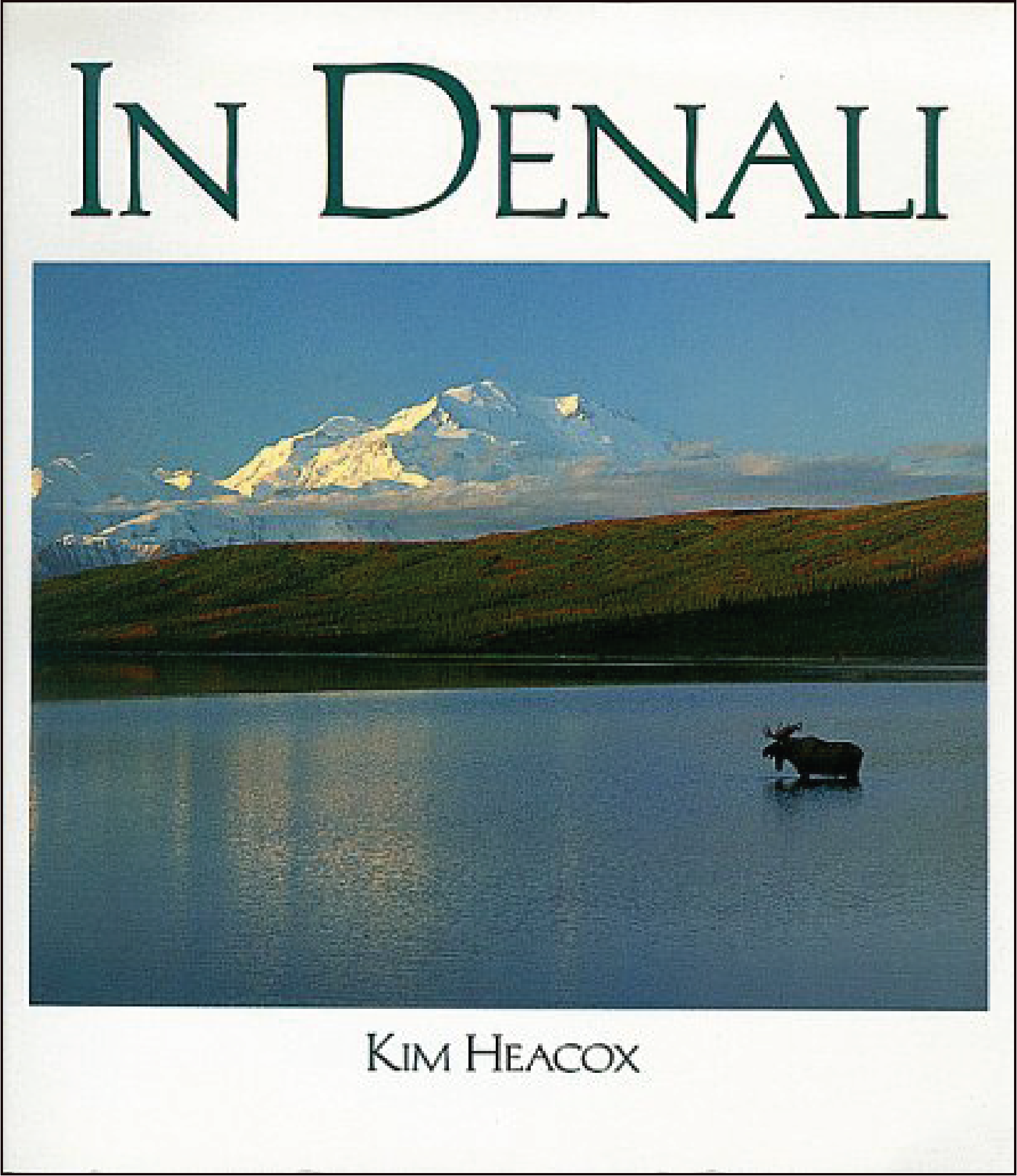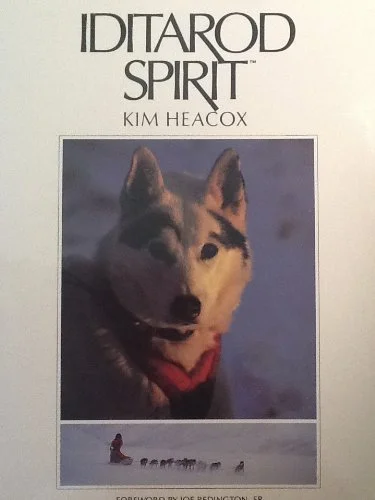
Books
“Writing is perhaps the greatest of human inventions, binding together people who never knew each other, citizens of distant epochs. Books break the shackles of time. A book is proof that humans are capable of working magic."
- Carl Sagan
On Heaven’s Hill
Novel | 2023
Finalist | Banff Mountain Book Award
An Anchorage Daily News “Favorite Book of 2023”
“A sprawling novel brimming with suspense, ideas and unforgettable characters, Kim Heacox’s On Heaven’s Hill paints a captivating group portrait of a middle-school rebel alliance discovering their true selves in America’s most glorious natural landscape. This book will appeal equally to aging idealists reared on Edward Abbey and adventurous kids hooked on Gary Paulsen. Oh, and it’s laugh-out-loud funny, too.” Mark Adams
“Few writers know Alaska's wildlands and human landscapes like Kim Heacox. In this remarkable novel, humans and wild things circle each other until they collide in gripping and inspirational ways. Whether you seek stirring insights, entertaining prose, or both, On Heaven’s Hill will capture your days and dreams to the last page. This is Heacox's finest work.” Daniel Henry
“A dazzling tale of a young girl, a desperate father, and a silver wolf caught in the middle of a battle between an Alaskan band of war veterans and corrupt land developers.” Lynne M. Spreen
Jimmy Bluefeather
Novel | 2015
Winner | National Outdoor Book Award
Winner | French Prix Expression
Finalist | Banff Mountain Book Award
Starred Reviews: Kirkus & Library Journal
“Every page of Jimmy Bluefeather glistens with authentic genius born from Kim Heacox’s wise and deep-rooted sense of place. Never have I read prose so brimming with poetry, so lyrical and so yearning, the words drawn so perfectly that the characters seem like photographs in a dream whose steady gazes blaze from the page into your heart, your mind, your soul.” Carl Safina
“Jimmy Bluefeather is a superb addition to Alaska – indeed, American – literature. With enough readership, Old Keb Wisting could become as beloved a character as To Kill a Mockingbird’s Atticus Finch.” Nancy Lord
The Only Kayak
Memoir | 2005 & 2020
Winner | National Outdoor Book Award as an “outdoor classic.”
Finalist | PEN Center USA Western Award in Creative Non-fiction
“Heacox is a poet, a scholar, a naturalist, and a wild man who , in this great book, weaves together the story of the land and the people. The Only Kayak helps to reconnect what the Lakota call the sacred hoop of life. I want to give this book to a dozen friends and, dear reader, I want to share it with you. Bravo, Kim Heacox.” Mary Pipher
“Kim Heacox has outdone himself. The Only Kayak is funny, sad, erudite, and beautifully written, and an important contribution to Alaska literature. It’s a rarity – a book that manages to convey an important environmental message without sliding into self-absorbed intellectualism.” Nick Jans
“This book is the Desert Solitaire of Alaska.” Ian Ramsey
Rhythm of The Wild
Memoir | 2015
Starred Review: Booklist
A sister memoir to The Only Kayak, wherein Heacox explores his 35-year-long relationship with Denali National Park, Alaska’s most iconic landscape.
“Top-notch environmental writing to shelve alongside George Perkins Marsh, Aldo Leopold, Robert Marshall and Barry Lopez.” Kirkus
Excerpt: “And what is the purpose of the mighty mountain? To collect the tender snowflake. And the purpose of the snowflake? To build a glacier. And the purpose of the glacier? To carve the mountain and melt into a river that rounds the stone that sharpens the mind of the hand that holds it. Mountains, like revolutions and freshly baked bread, rise up from the bottom.”
John Muir and The Ice
That Started a Fire
Biography | 2014
Starred reviews: Kirkus & Booklist
“Kim Heacox – one of America’s finest outdoor writers – has brought the majestic beauty of Alaska alive in John Muir and the Ice That Started a Fire. It’s elegantly written, brilliantly researched, and illuminating in fifty different ways. Highly recommended.” Douglas Brinkley
Excerpt: “To Muir, glaciers had character, power, and grace. They were alive and deserving of our deepest understanding and respect. In their presence, he became a Druid, of sorts, a Celtic priest. More accurately, he was the Johann Wolfgang Goethe of his day, a holistic thinker who challenged the modern scientific revolution to find a balance between the rational, quantitative mind, and the intuitive, qualitative mind. Muir could have done this with wolves or bears, or with flowers, as Goethe had. But he did it with glaciers, cold rivers of ice that appeared static but in fact moved dynamically over the land and shaped everything around them. They would become the perfect piece of symbolism in the twenty-first century’s warming world.”
The National Parks,
An Illustrated History
History | 2015
The official centennial book of the U.S. National Park Service that celebrates the first 100 years (1916-2016) of the world’s oldest and best-known government land conservation agency. Lavishly illustrated with photography, graphics and historic paintings, this is Kim’s fifth book with National Geographic.
Excerpt: “In the absence of any deep regard for the land, everything becomes a number, a commodity, a utility. Everything is grist to the mill. Trees become board feet. Rivers become gradients and flow volumes. Where was the outrage? The eloquent dissent? Where were America’s poets, painters, and photographers? Where was the long reach of the federal government? Not the cold hand of tyranny, but the warm hand of benevolent wisdom that curbed our worst impulses and said, No. Not here. This place we leave alone.”
Caribou Crossing
Novel | 2001
“A novel doesn’t get much closer to the headlines than this one,” wrote Bill McKibben, “or much closer to the truth about what counts in this economy. Kim Heacox provides a great read – and a great service – in this fine book.” The central character, Shannon DeShay, is the daughter of an oil geologist in Alaska who uncovers a plot to destroy the environmental movement, and must risk her life to save the man and the refuge she loves – in this case, the Arctic National Wildlife Refuge. “Grishamesque” said Booklist, in praising this book for its pacing and intrigue. “This novel is superb in many ways,” wrote Jonathan Waterman, “refreshingly original, well-plotted, with interesting characters who are richly imagined. Caribou Crossing is our new Monkey Wrench Gang, and Kim Heacox our northern Edward Abbey.”
An American Idea:
The Making of the National Parks
History | 2001
How did a nation so dedicated to business, growth and the capitalistic spirit come to embrace national parks; the idea that we should leave a few pieces of America as we found them? It’s a fascinating, inspirational story told over a 400-hundred-year reach of time, beautifully illustrated with historical sketches, paintings, and photographs. “A uniquely American story,” writes Robert Redford, “with all the drama and color of a good novel. An American Idea: The Making of the National Parks is a compelling presentation of the long and difficult journey that resulted in one of our nation’s most significant accomplishments.”
Shackleton: The Antarctic Challenge
Biography | 1999
“Those who read this excellent book,” wrote Sir Edmund Hillary, “cannot but be overwhelmed by a story of a remarkable character.” That central character happens to be Antarctic explorer Sir Ernest Shackleton, once called “the most successful failure in polar exploration.” He never achieved his goal (of reaching the South Pole, or traveling across the continent by sled dog and ski), but he never lost a man under his command. This book explores his outrageous Endurance expedition of 1914-16 (a story of epic survival), and his other three journeys to Antarctica as well, how he became who he was, a leader who inspired his men to never give up. Illustrated with color and historical black & white photographs from the likes of Frank Hurley and Herbert Ponting.
Antarctica: The Last Continent
Natural History | 1998
For the first time in more than 100 years, the National Geographic Society dedicated an entire book to the coldest, windiest, highest, driest, least populated, and most remote corner of the world. This book still serves as an excellent primer for anyone wanting to travel to “the last continent.” The introduction describes three Antarcticas, the biological, the geographical, and the spiritual, each with its own magic and boundaries, waiting “at the bottom of the world, locked in cold storage, demanding new sensibilities if we are to understand it, appreciate it, protect it… Wilderness is not a political designation here, it’s an essential truth.” Over 200,000 copies sold since 1998.
Alaska Light
Photography & Essays | 1998
“Alaska light, like Alaska itself, is rich with extremes…” begins a photographic book that took six years to complete. “It makes children of Alaskans who are otherwise automated by commerce and calendars. It snaps them into rhythms ancient and nearly forgotten; a time long ago when every human lived in close reciprocity with the earth, to the air and water, seals and songbirds, snow and silence…” The 112 color photographs in this book cover Alaska from Admiralty Island National Monument to the Arctic National Wildlife Refuge. The text is organized into five lively essays and 28 story captions, with the last six pages dedicated to a timeline of Alaska history. As Bradford Washburn wrote, “Kim Heacox’s work instantly conveys to the reader not only his ability as a photographer, but also his love of the country. This book is just plain gorgeous.”
Alaska’s Inside Passage
Photography & Essays | 1997
This large exhibit-format photography book (10”x14”) covers Alaska’s famous Inside Passage, from Ketchikan to Skagway, with colorful, sharp images (many taken with medium-format cameras) of intimate coves and seaside hamlets, tidewater glaciers and humpback whales, brown bears and flower meadows, sun-struck mountains and gleaming rainforest temples. Four essays accompany the photos; stories about traveling and living in Alaska, about John Muir and Tlingit Indian legends, totem poles and Chilkat blankets. Alaska’s Inside Passage is now the most popular cruising destination in the world (it surpassed the Caribbean around 2010), and offers vacationers wild, open scenery from the comfort of a luxury cruise ship or tour boat. A perennial strong seller, with more than 70,000 copies sold.
Visions of Wild America
Biography & Natural History | 1996
The American landscape, its wildness has made us inventive. Its vastness has made us bold. Its great teachers, concerned voices, have told us who we are, where we came from, and where, in the presence or absence of wildness, we might go. This book – with each chapter as a stand-alone mini-biography – celebrates a chorus of those voices, from Emerson to Thoreau to Muir, with Rachel Carson, Robert Marshall and Edward Abbey thrown in to spice things up. Visions of a Wild America has sold over 200,000 copies and continues to sell in national parks across the country. Many colleges and universities use it for a textbook in environmental studies.
In Denali
Photography & Essays | 1992
Winner of the 1993 Benjamin Franklin Book Award for Nature and Science, this photo book has sold more than 60,000 copies and garnered generous praise. “These one hundred photographs,” wrote the Fairbanks Daily News Miner, “reveal what makes Denali National Park worth preserving. The flowers, grizzly bears, birds, mountains, rivers, sunsets, and rainbows jump off the pages in crisp detail.” In Denali reminds us that places like this – immense, open, wild, and free from the mark of man – are among the most valuable heritages we can save. This is a sister book to Kim’s 1998 book of photos and essays, Alaska Light.
Iditarod Spirit
Photography & Essays | 1991
This large exhibit-format photography book (10”x14”) celebrates the spirit and love of dog sledding in Alaska, not just the famous Iditarod Race but many races and activities that serve as qualifying events for mushers who want to run the Iditarod. A two-page map shows the routes of the most well-known races. The photography is bright and sharp, accompanied with lively chapters about the history of dog sledding, including the story of the famous 1925 serum run to Nome, and a chapter that puts the reader on the sled, and still another chapter as a collection of fun quotes about dog sledding in Alaska.

